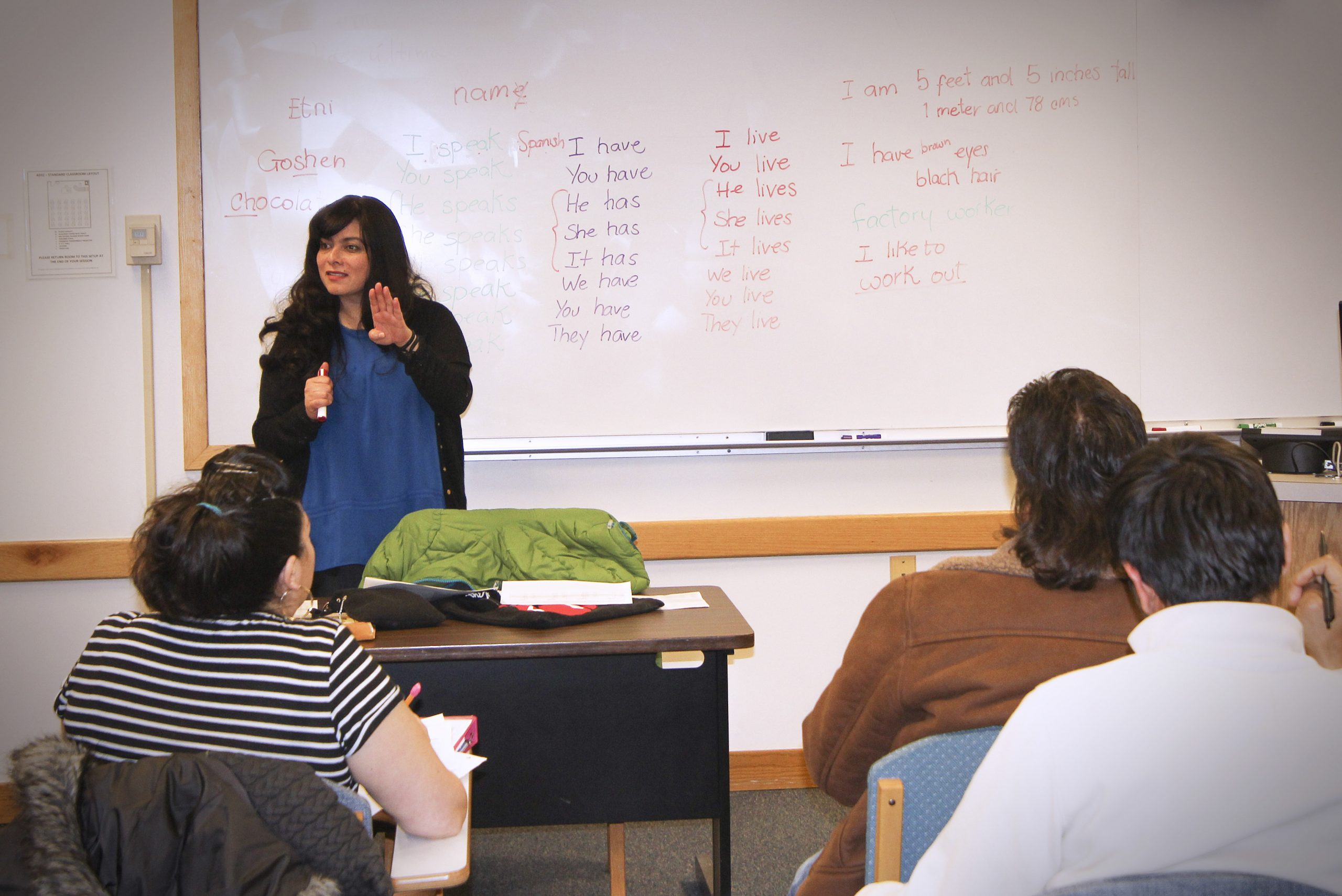The list of words written on the board in Newcomer 14 reads: fridge, note, appointments, shopping list. At the classroom tables, four adult students are bent over their books, fiercely concentrating as they complete an exercise in matching sentences to pictures. These students in Goshen College’s Adult English Language Class, are part of an endeavor which has recently seen high demand from the greater Goshen community.
With locations at Goshen College and Ivy Tech Community College, the classes are the largest they have ever been in their five-year lifespan. To accommodate the need, six levels of classes are offered in both the morning and evening. As of now, there are 163 enrolled students, and there are another 112 who will participate next semester.“Classes have been very effective…students see the benefit, so they talk to their neighbors, they talk to their friends, and they talk to their relatives,” said Rocío Díaz, Goshen College’s director for community engagement and adult outreach
Part of the reason the classes have been so productive is due to the system that is in place: Upon applying, students are evaluated and placed into one of the six different levels. At the end of a semester term, they take a final exam, and if they pass, they move on to the next level.
“The program has grown because of the dedication of [the] teachers and the structure of the program,” Díaz said. “Some other programs have good intentions but it’s just not a serious thing . . . [the students] come here and they like it.”
The program has faced its fair share of challenges.In the beginning, low funding resulted in a higher price for students. Additionally, the increasing number of students has led to a greater need for teachers.
Plus, the students also face their own personal challenges on a daily basis.
“The majority have families, they have full time jobs, and they have other responsibilities, and they still try to make it to class,” Díaz said.
“That’s the biggest challenge that I see in the people attending the classes . . . attendance. Sometimes it’s not very consistent.”
The cost of attendance is something that is looked at closely by Rocío Díaz and her peers. On one hand, paying to attend means that the students take it seriously, but on the other, a high cost of attendance makes it less accessible for many people. A recent partnership with Horizon Education Alliance has helped lower the cost.
The Family and Social Services Administration of the state of Indiana has partnered with Goshen College’s program in an effort to try to help make it easier for students to attend classes. This partnership allows students to qualify for free preschool for their children and get funds to aid in covering daycare expenses.
“Some people come here because they want to help their kids in school, they feel happy when they can talk to the teachers in the parent teacher conferences,” Díaz said.
“Many of the students right now . . . already have a degree from their country of origin. I had a doctor, I have engineers, I have accountants, . . . but because of the language they have to work in a factory.”
Díaz told the story of a young woman from Honduras who started out early on at the most basic level. Over the past several years, she worked her way up through all six levels, semester by semester. Last fall, she came into the office for an appointment to set up her classes for the fall semester. Díaz noticed halfway through that she was speaking entirely in English and asked her about it. The young woman’s face lit up, and she told Díaz about her new skills, saying they improved her confidence. Now, at work, Human Resources calls her to interpret for her other coworkers.
“She was a different person, I saw her transformation of this lady that was so shy to someone totally different,” Díaz said. “You could see the pride in her face, she felt very accomplished!”
The majority of the students do speak Spanish and come from various Latin American countries, but the large number of students means that there is a lot of variety in terms of languages spoken and countries of origin.
“This year we have 14 different countries represented in the classes . . . most of them are Latinos but we also have people from other places,” Díaz said. All together the students speak six different languages.
“There’s a mentality that these immigrants, they don’t want to learn English,” Díaz said. “But I think that the high demand tells you that it’s not the case, they do want to learn English but there’s not programs available out there for these people to learn English.”




